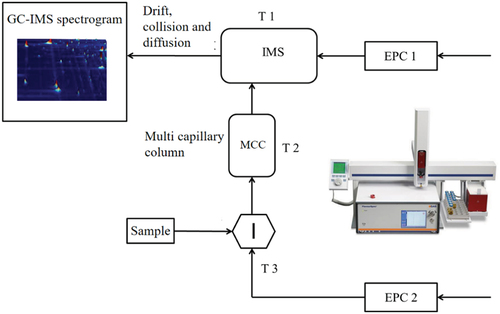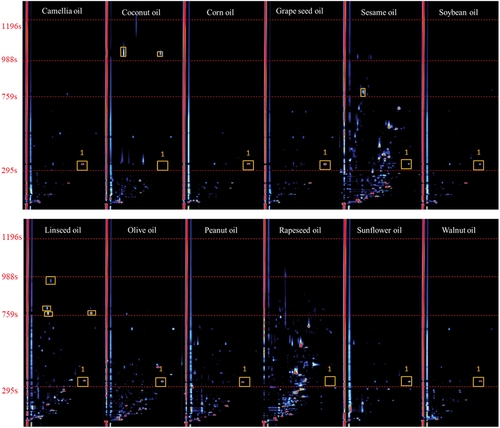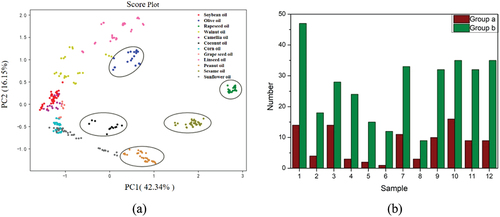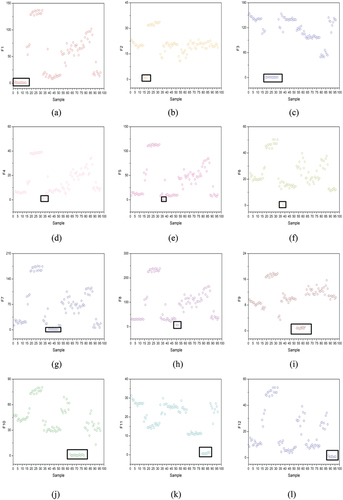Figures & data
Figure 4. 74 peak intensities. (a) 47 soybean oil samples; (b) 18 olive oil samples; (c) 28 rapeseed oil samples; (d) 24 walnut oil samples; (e) 15 camellia oil samples; (f) 12 coconut oil samples; (g) 33 corn oil samples; (h) 9 grape seed oil samples; (i) 32 linseed oil samples; (j) 35 peanut oil samples; (k) 32 sesame oil samples; (l) 35 sunflower oil samples.
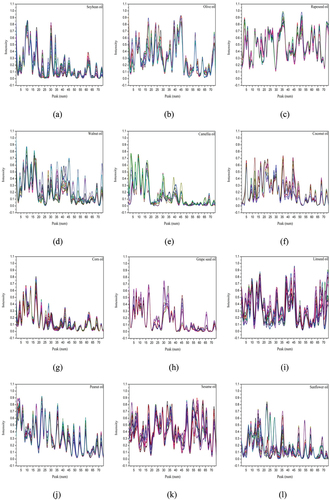
Table 1. The number of peaks of the 12 edible oils in 5 different retention time periods.

